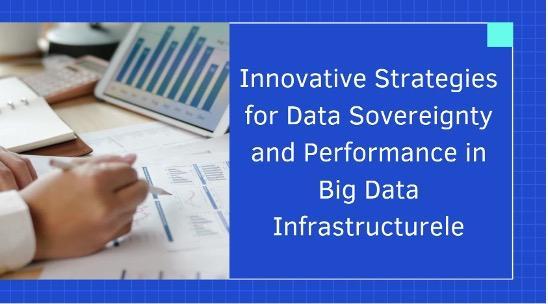
In the rapidly advancing technological era, Bharath Nagamalla explores a pivotal facet of enterprise technology in his detailed examination of on-premise big data infrastructure. His work highlights how organizations are innovating to balance data sovereignty with performance, particularly as regulatory landscapes become more complex.
The Rise of On-Premise Solutions in a Data-Driven World
Modern enterprises are navigating an explosion in data generation, with global data projected to surpass 180 zettabytes by 2025. This surge necessitates solutions that not only handle vast volumes of data but also ensure compliance with stringent international regulations. On-premise big data infrastructure has emerged as a robust alternative to cloud-based solutions, offering control over data location and processing while optimizing performance.
Organizations that adopt on-premise systems often achieve faster data processing times and reduced compliance costs. For instance, sensitive applications have shown improvements in latency and efficiency, providing a competitive edge in industries requiring high data precision and security.
Harnessing Advanced Ecosystems for Enhanced Capabilities
The Hadoop ecosystem has evolved as a cornerstone of big data infrastructure. Its distributed file system and resource negotiators like YARN enable organizations to manage enormous datasets with remarkable efficiency. These tools allow enterprises to process petabytes of data daily while ensuring high availability and low latency.
Innovations such as unified observability frameworks and enhanced encryption techniques are transforming how enterprises operate their infrastructure. By reducing the time needed to address system issues and enhancing security protocols, these advancements ensure that organizations can meet their operational goals without compromising data integrity.
Prioritizing Data Governance and Security
Effective data governance is essential in today’s regulatory environment. Organizations must implement frameworks that integrate technical controls with organizational processes to achieve compliance. Innovations such as privacy-by-design principles and adaptive security architectures are at the forefront of this shift.
Real-time threat detection systems and detailed audit capabilities have further strengthened the security of on-premise systems. These measures not only protect sensitive data but also enhance operational transparency, enabling organizations to meet audit requirements with greater efficiency.
Scaling with Precision and Agility
Scaling big data infrastructure effectively demands a strategic approach that balances current requirements with future growth. Predictive analytics and machine learning are key tools, enabling organizations to forecast capacity needs accurately, avoid overprovisioning, and optimize costs while ensuring robust system performance. Maintaining the ideal compute-to-storage ratio and adopting hybrid scaling models—blending vertical and horizontal scaling—allow enterprises to adapt seamlessly to growing data demands. This approach ensures scalability, efficiency, and resilience in an increasingly data-driven environment.
Future Directions: AI and Hybrid Architectures
Emerging trends in big data infrastructure are shifting towards hybrid architectures and AI-driven management systems, representing the next major frontier in the field. Hybrid systems seamlessly blend the control, security, and compliance of on-premise solutions with the scalability and flexibility of cloud environments, offering organizations a balanced approach to data management. At the same time, advancements in AI are transforming infrastructure management by enabling autonomous operations, such as predictive maintenance, intelligent workload distribution, and real-time optimization. These technologies not only enhance efficiency and adaptability but also bolster security, ensuring systems can handle evolving regulatory and technological demands. By adopting these innovations, organizations can future-proof their data strategies, maintaining a competitive edge in an increasingly dynamic and data-intensive landscape.
In conclusion, Bharath Nagamalla's insights highlight the pivotal importance of on-premise big data infrastructure in addressing the growing challenges enterprises face in managing vast data volumes. By integrating advanced technologies with strategic planning, organizations can achieve exceptional performance and compliance. As hybrid architectures and AI-driven systems continue to evolve, on-premise solutions will remain a foundational element of enterprise data strategies, ensuring long-term innovation and adaptability.